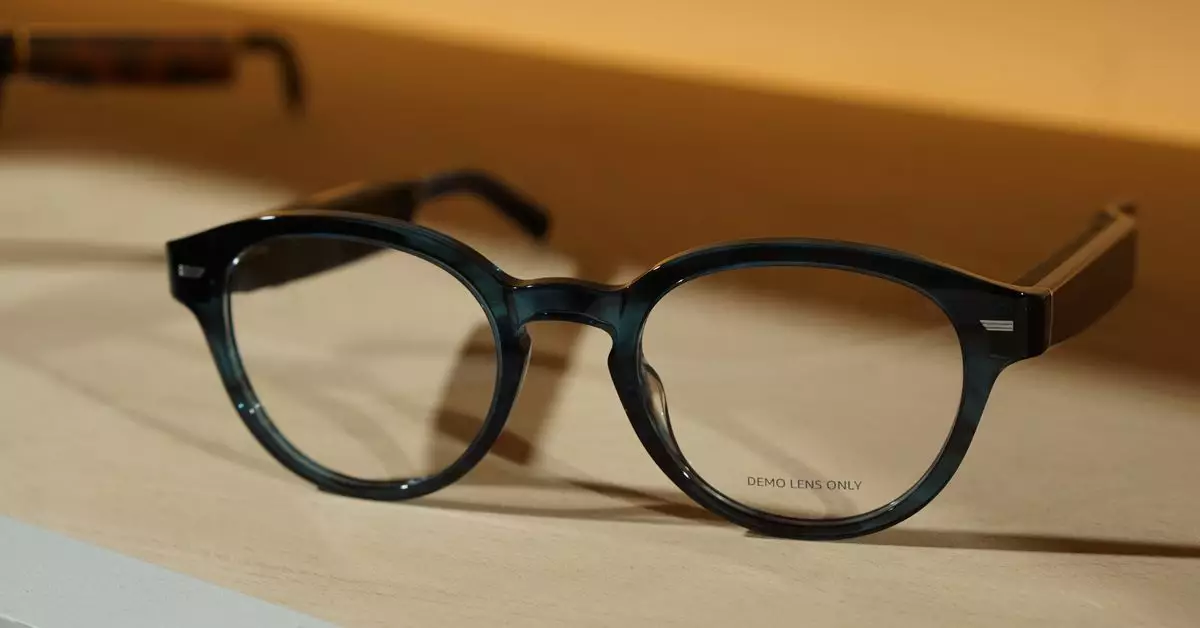In a bold move that highlights the intersection of technology and logistics, Amazon is reportedly developing a new set of smart glasses aimed primarily at optimizing delivery operations. As reported by Reuters, these glasses, known internally as “Amelia,” are designed to provide delivery drivers with real-time, turn-by-turn directions. This initiative underscores Amazon’s persistent commitment to enhancing efficiency, particularly during the critical final stages of package delivery, often referred to as the “last 100 yards.”
The core objective of this development is to streamline the delivery process. The smart glasses are set to be based on Amazon’s existing Echo Frames platform, which has primarily focused on audio feedback. However, “Amelia” takes a significant leap forward by introducing an embedded display that could potentially convey directions with exceptional precision. Imagine a driver receiving visual cues that specify the exact moment to make a left or right turn after exiting an elevator. This could eliminate ambiguity, resulting in quicker, more reliable deliveries.
While the ambitions behind smart glasses for delivery drivers are commendable, several hurdles must be overcome before they can become a common sight on the job. One of the main challenges lies in maintaining a balance between functionality and comfort. The integration of a display and other technological components needs to occur without significantly increasing the device’s weight or reducing battery life. Current reports suggest that issues surrounding battery longevity—essential for drivers who typically work eight-hour shifts—remain a considerable engineering challenge.
Moreover, there’s the added complexity of accommodating users’ needs, particularly those with specific eye prescriptions. Many potential users already rely on corrective lenses, and past attempts at consumer-focused smart glasses have struggled to address this vital aspect. Amazon’s engineers will need to develop a solution that is versatile enough to fit a range of prescriptions while also being lightweight and user-friendly.
Beyond the technological challenges, Amazon faces a cultural shift within its workforce. The adoption of “Amelia” will require buy-in from a significantly diverse group of drivers, including many third-party contractors. Convincing this broad base to embrace new technology will take time and careful management. Additionally, Amazon must gather enough data about delivery environments—such as building layouts, roadway conditions, and surrounding infrastructure—to fully realize the potential of the smart glasses.
The data collection aspect is particularly crucial. Accurately mapping out the last 100 yards of various delivery locations is not a small feat. It entails an immense investment of time and resources to ensure that the smart glasses provide reliable, effective navigation assistance.
While Amazon’s initiative is promising, it is essential to acknowledge the existing landscape of smart glasses and augmented reality technologies. Companies like Google, Magic Leap, and Microsoft have also ventured into this space, often pivoting towards enterprise applications after experiencing lackluster consumer sales. For instance, recent reports indicated that the last generation of Echo Frames sold disappointingly fewer than 10,000 units, a stark contrast to the relative success of contemporaries like Ray-Ban’s Meta glasses.
This history of underperformance raises questions about whether Amazon will limit the use of “Amelia” to their delivery network or seek to partner with third-party enterprises that could benefit from such technology. There remains the possibility that advancements made for Amazon’s fleet could eventually trickle down to consumer markets, however, asserting that the product’s viability in these sectors is still uncertain.
While Amazon’s development of smart glasses for delivery logistics is an ambitious and potentially game-changing venture, the path to successful implementation is fraught with challenges. From technical hurdles of design and battery life to the cultural acceptance among drivers, the road ahead is anything but straightforward. Nevertheless, if executed effectively, this initiative could herald a new era of efficiency in last-mile logistics, transforming how packages are delivered and possibly setting the stage for augmented reality in everyday consumer use.

